Published 8 September 2022 ● Last Updated on 10 October 2022
From the time that life began on Earth, innumerable animal and plant species have thrived and disappeared because of diverse reasons ranging from evolution to an asteroid crash. But never before has a species itself been the driving force of mass destruction. We are now at a juncture where humanity’s actions are the prime cause for the loss of almost 150 species a day. In May 2019, a United Nations report warned that around one million species were at risk of extinction – more than at any other time in human history. Many scientists are labeling this the start of the sixth mass extinction – the fifth being the end of the age of dinosaurs, wherein 75% of all terrestrial and marine species were wiped out.
Can we change this trajectory? For at least some animals – we already have!
Grizzly bears, humpback whales, and bald eagles are just some of the 48 species now listed as “recovered”. The rebound of any species is a gradual process that requires a long-term commitment and is dependent on many factors including direct threats, habitat, food availability, reproduction rate, and climate. The u-turn from the brink of extinction requires what is called a ‘species recovery plan’ – a document that describes the current status, threats and intended methods for increasing rare and endangered species population sizes.
Until recently, there was no general definition of a recovered species, to address this challenge, the International Union for the Conservation of Nature (IUCN)’s Species Survival Commission – the world’s largest network of conservationists – has developed a Green List of Species to highlight species recovery. This tool will complement the well-known Red List, which highlights endangered species.
As per IUCN, a species is considered recovered only if there is functional recovery, that is enough number of the species for it to continue the function the species is known for. For instance, bees are known to pollinate plants while sucking nectar.
Here is the story of 5 animals that were brought back from the brink by massive conservation efforts. This is not an extensive list but a sample of the great work being done towards wildlife conservation.
The Fin Whale
Recently, a vast group of the world’s second largest animal, the fin whale was filmed feeding in Antarctica – a sighting so rare, it made it to the news. Fin whales had suffered a sharp decline in population in the 20th century due to industrial whaling, when an estimated 700,000 fin whales were killed.
Video Credit: The Guardian
A whaling ban in 1976 set the stage for recovery, and led to a steady increase in their numbers.
Fin whales can live to around 70 or 80 years when left alone and have just one calf at a time, so the recovery of populations was a slow process. Currently, IUCN lists fin whales as “vulnerable” and estimates the global population as 100,000, with most of these in the northern hemisphere while their traditional feeding grounds is the Antarctic.
Whales feed on iron-rich krill but they also defecate in the surface waters – returning nutrients to the ocean that help spark the growth of tiny phytoplankton, the foundation of the marine food web. Like plants on land, phytoplankton photosynthesise using the sun’s rays to turn carbon dioxide into energy and oxygen.
Bald Eagle
Around 40 years ago, bald eagle numbers dwindled across the US and sightings became extremely rare, celebrated events. America’s national symbol was on the verge of extinction, with little hope of recovery. Illegal shooting, pesticide contamination, degradation and destruction of their habitat, they all played a role in the bald eagle’s decline. By 1963, only 487 nesting pairs remained.
In 1972, DDT, the harmful pesticide contaminating their food, was banned in the US. 1973 saw the introduction of the Endangered Species Act, which helped protect the bald eagle in particular. In the 1980s, a series of recovery plans were set in motion across the US, and by 1995 the bald eagle had moved from the endangered species list to the threatened list.
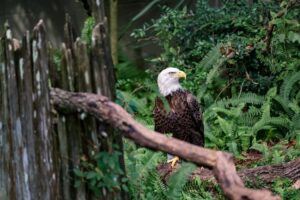
Bald eagles are a very important part of the environment. By eating dead animal matter, they help with nature’s clean-up process. Bald eagles are also hunters, so they keep animal populations strong. They do this by killing weak, old, and slower animals, leaving only the healthiest to survive.
Royal Bengal Tiger
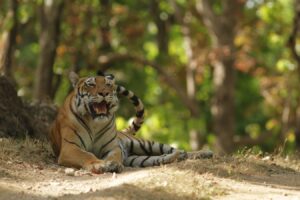
The Bengal tiger is a vital animal species, living primarily in lowland tropical rainforests where it preys on ungulates such as deer and wild pigs. As an apex predator, it helps maintain the ecological viability of the entire area, habitat, water, and climate security of the region. Unfortunately – its survival is threatened by loss of habitat, poaching, and shrinking prey populations. Bengal tigers are hunted for their body parts which are used in traditional Asian medicines.
At the time of India’s independence in 1947, the tiger population in the country was estimated at 40,000; Fast forward 25 years – and the Indian tiger census conducted in 1972 revealed the existence of only 1,827 tigers. Project Tiger, started in 1973, is one of the largest species conservation initiatives in the world. India has since increased the number of tiger reserves from 9 (in 1973) to 52 (in 2022); and the latest tiger census placed the population at 2,967.
Sea Otter
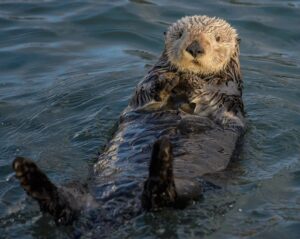
Sea otters are a keystone species, playing an important role in keeping the balance of coastal ecosystems around the northern and eastern North Pacific Ocean. These cute, furry mammals feed on invertebrates including clams and sea urchins, which would otherwise run rampant and devour entire kelp forests. The kelp forests are important as they provide food and shelter for many other marine animals and birds, store carbon dioxide and protect coastal areas from storms.
Sea otters do not have any blubber to keep them warm – instead they have extremely thick fur. The fur is estimated to have a million hairs per square inch, making it the densest in the animal kingdom. Their lush fur meant that sea otters were hunted extensively in the 18th and 19th centuries resulting in their numbers dropping to as low as 2,000.
Sea otters have been protected by the International Fur Seal Treaty since 1911. This treaty between the U.S., Russia, Japan, and Great Britain was established to ban large-scale commercial hunting of sea otters and fur seals and allow their population to recover. Today the southern sea otter population, which once numbered about 16,000 animals, is hovering around 3,000.
Galapagos Giant Tortoise
The Galápagos Islands, 1,000 kilometres off the coast of South America, are probably most famous as the place that inspired Charles Darwin’s theory of evolution. They are home to an extraordinary array of wildlife, including giant Galápagos tortoises, the world’s largest land-living cold-blooded animals.
The tortoises once thrived in the archipelago. There were originally 15 species that evolved as the islands formed volcanically. However, since the arrival of people, four species have become extinct.
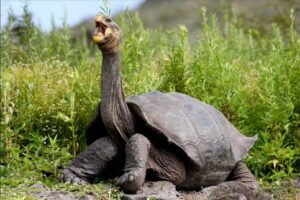
As many as 300,000 giant tortoises once roamed the Galapagos Islands. Whalers and colonists started collecting them for food in the 19th century. This resulted in the loss of between 100,000 and 200,000 tortoises. Early settlers introduced rats, pigs and goats, which preyed upon tortoises or destroyed their habitat.
Thanks to conservation efforts like setting up of the Galapagos Tortoise Movement Ecology Programme and the eradication campaigns that aim to remove the introduced species that threaten the survival of tortoises, about 15,000 tortoises are to in the wild today.
Tortoises eat and disperse many plants as they move around – and they are more mobile than many people realize. As they move, tortoises crush vegetation. They are thought to be an important factor in maintaining the native savannah-like ecosystems on the islands where they live. When tortoises are scarce, shrubs sprout up, crowding out many herbaceous plants and other animal species.
Long story short
It is possible to bring endangered species back from the brink through effective conservation measures. Protecting biodiversity further leads to valuable natural resource preservation and facilitates the well-being of ecosystem functions.
As per conservationists, at least 30% of the land and oceans must be protected by 2030 to save our future. This 30X30 goal may sound audacious given how contrary it is to the current trends – but it is necessary for disrupting the ongoing plunder of biodiverse habitats. The logic behind this is fairly simple: when habitats are protected, nature heals and replenishes.
Related Links
Wildlife tourism | 6 Warning signs to watch out for on a safari
#PrayforAmazonas | Why the Amazon rainforest fires should matter to each one of us

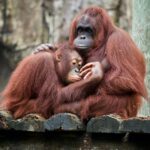

0 Comments